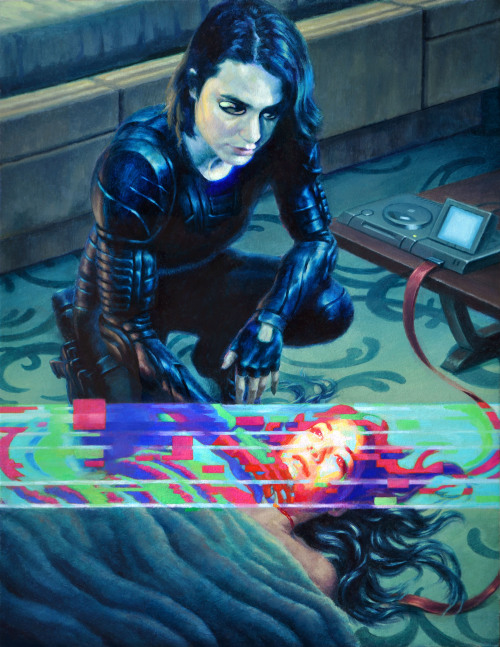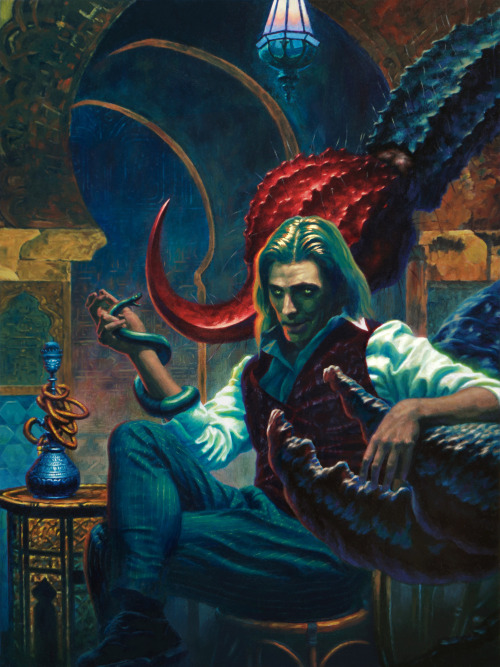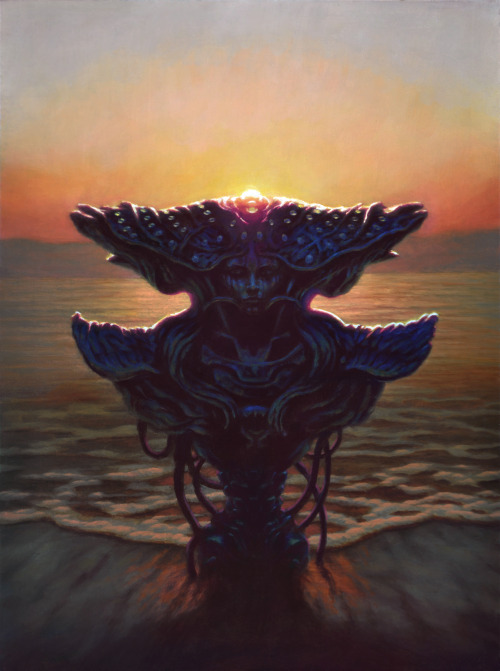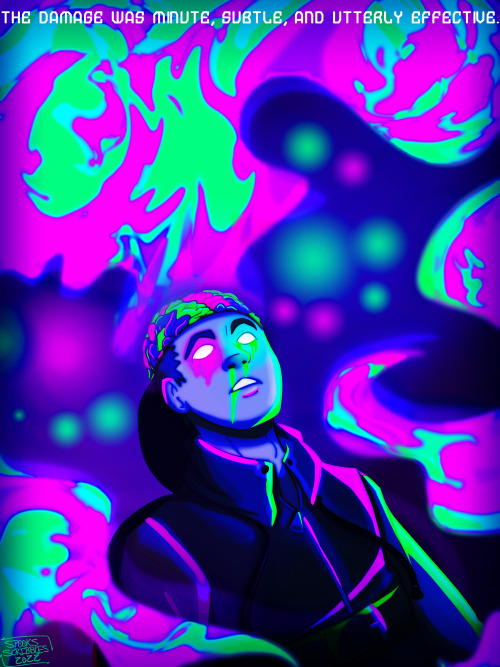#neuromancer
some friends said that I should create a 3d character based off of the upcoming CDprojekt Red game Cyberpunk 2077. so here are some work in progress images of the design! I’m hoping to bring part of the character to a finished game ready textured state!
It’s gonna be a great learning experience! I’m so excited!!!
It’s been an interesting project so far! I’m absolutely pumped for Cyberpunk 2077
Post link
I read William Gibson’s cyberpunk classic Neuromancer and I thought it was just sort of okay; not, like, bad, but not particularly exceptional either.
But I learned v. quickly that the fact that I don’t think it’s the best book ever written makes a lot of people on the Internet instantly & unreasonably angry, so now I hate it performatively.
i just bought neuromancer the other day but haven’t yet cracked it open, i am SO curious now
The prose is tedious and the characters (with the v. notable exceptions of Molly and the AIs) are all very flat and uninteresting, but the world is still fascinating and bazonkers enough to make it a fun read.
I mean i genuinely love it but it is like super one hundred percent an Acquired Taste thing. Though it loses points in the sequel for not enough Molly
Tbh if Gibson had just made it about Molly the whole time, it would be the best book ever.
I’m not particularly impressed by Gibson but in this house we do love and appreciate Molly Millions.
You are absolutely correct in all ways and I still want to be Molly Millions when I grow up or possibly date her
Reminds me of the time some dumbass on this hellsite got into an argument with me when I said On the Road is a kind of bad, boring book that reads like an extended shitpost. (And the book was actually written during a three-week coke binge, so… yeah.)
Dude was acting so butthurt, even as he swore up and down he wasn’t a Kerouac fanboy. Then he tried to dunk on me for writing vampire fiction. (LOL. He really thought he was doing something there, didn’t he?)
So, yeah. I feel you, OP. Apparently having negative opinions about “classics” gets people veryornery.
(I kinda like Marylou, though. Don’t know why exactly, but I do.)
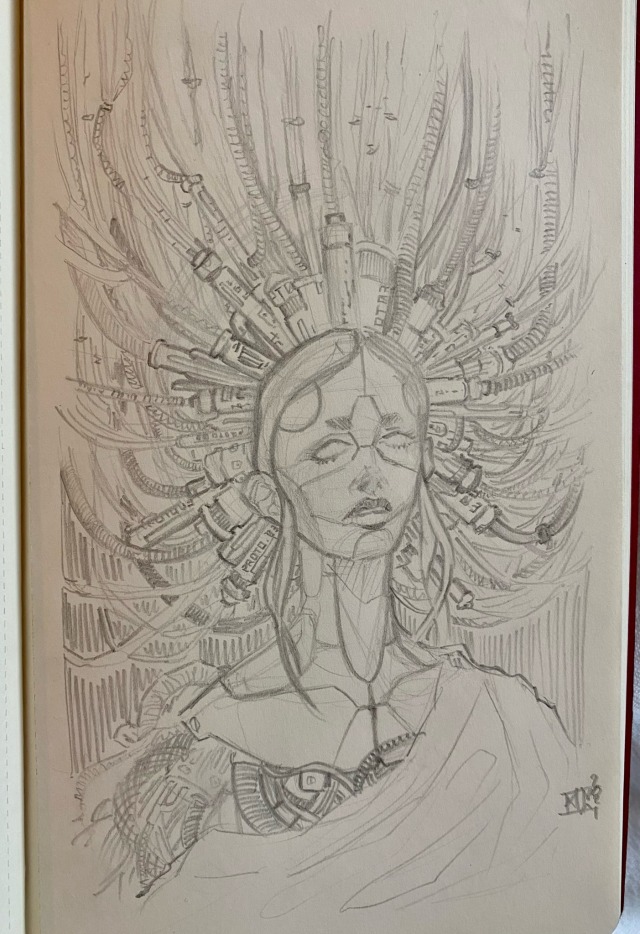
Yet another sketch destined to remain such.
I wanna go snowboard.
Now and then we get asked for advice on creating a book collection. Most of our collectors know exactly what they want to collect and how to go about it, but for new collectors it can be a difficult task.
One of the biggest sticking points, particularly over the last decade or so, is concern about getting the key titles. We were recently offered a collection of Ian Rankin books, it was a nice collection, mostly in decent shape, but lacked the key title, Knots and Crosses. The collector was looking to sell because he couldn’t justify spending £1000 or so on a nice copy, and an ex-library copy just didn’t seem right. So he planned on selling the rest of the set to finance a purchase of Knots and Crosses and taking it from there.
This is something we see increasingly; the price of collection highlights has increase hugely over the last couple of decades as the true scarcity of these items is better known through improved information access and the demand is similarly increased as their prices become more visible. We’re going to talk below about various strategies to deal with this.
Accept that Goalposts Move
Now, it’s important to note that the vast majority of collectors don’t have a goal in mind when collecting. At first, yes, most do, but as that collection grows, the goalposts move - nearly always. Sometimes this is manifest through a sell-off, where the collection is sold to finance a new one. Sometimes the completed collection becomes part of a collection and other interests take precedence (I’ve got a full set of Heinlein’sUK hardbacks, I’m going to get the US hardbacks now or I’ve got all BernardCornwell’sbooks, I might move onto Patrick O’Brian now). Most often though, the side collections and diversions take seed much earlier on, particularly when opportunity offers.
The best thing about this though, is that this is good and almost vital.
- Accepting this leads to accepting the fact that collecting is about the journey not the result.
- Accepting this lessens the impact of completion; the collection will never be complete so that missing volume isn’t asvital (tenuous point in some cases)
- Accepting this vastly improves the chances of finding books for the collection. The joy is in the chase of course not the capture.
How to Pick a Starting Point
A lot of people specialise, we have collectors who just buy Stephen King proofs, others who just buy Nebula award winners. These kind of collectors have often been through the process of deciding what they want and are acceptant of the limitations and costs. But if you don’t have a specific definition, or even if you do, our recommendations are as follows.
Build on your Interests
IfHaruki Murakamiis your favourite author, then perhaps that would be a good place to start. Write his name on a piece of paper, but nothing further. If you like modernism, write that on the piece of paper. Books with high production values, write it on the paper. Books you’ve read, write it down. The Vietnam War, write it down. Significant moments in the history of literature, write it down.
Perhaps your interests aren’t as clearly defined and you’re interested in curious inscriptions, true rarities or forgotten books. Still, write it down, but take a moment to think how those rules are defined. Books with curious inscriptions - does the inscription have to be by the author? What defines curious? True rarities - What defines a true rarity? No copies on the market, unrecorded in bibliographies? Forgotten books - Are these books that have been out of print for fifty years? Perhaps they don’t have an entry in Wikipedia? Perhaps there’s no reference online? Once you’ve produced the definition, write it down.
Maybe you want to just collection books that take your fancy - then you don’t need this list. You’re happy, your horizon is wide and distant. Guard you secret jealously.
Think About your Budget
This is one of the most important things to consider. Try not to think about what you might be able to afford in the future (it will never be enough), think about how much and how often you want to be able to able to invest (invest in the enjoyment not the financial return). Here at Hyraxia Books we have collectors who know the books they want and will pay for them over a number of months. That’s fine, and they’ve usually accepted that that means fewer purchases. Others don’t like to do that, they enjoy the buzz of the chase so would rather spend £100 one week, £50 the next, £250 a month later. They might spend £1000 over a year, and think that they could’ve got one really nice book, but generally it’s more about the chase.
For many, this is just an as-and-when - you know how much you’re willing (or able) to spend on your collection. It’s just useful sometimes to take a step back and realise that many of the expensive books aren’t out of your reach, it might just take a bit of planning.
So with that in mind, pick a handful of prices, or better still, a range of prices you’re willing to pay. It might be wide £25-£2000, or it you might have thought that you’d like to buy a book every fortnight, so your range is £50-£100. Alternatively, you might have an idea from shopping the kind of prices that you consider: £500, £750, £2000, £1500. Write them down on your paper. The range isn’t as vital as understanding budget constraints, but it helps keep your collection in check. If you’re looking around the £500 mark, £10 books might lessen the collection, and similarly, if you limit yourself to £10, then the £500 book might tower over all the others.
Vitally though, the prices are secondary to the collection. This is important. If you want to get every book written by John Steinbeck then you still might need to plan, but your range should reflect the requirements of the definition.
Think About The Books
So, on your paper you have your budget and your interests. You have to now decide how they are going to reconcile. So if you’re interest is George Orwell and your budget is £500-£2000, you are not going to get a full set of first editions in dustjackets. If your interest is Magic Realism, and your budget is £25-£250, then you’re not going to get a first Argentinian edition of 100 Years of Solitude. So how do you reconcile that?
Let’s be practical here. If-you-try-hard-you-can-achieve-anything doesn’t apply. The majority of people will to spend a couple of hundred on a book every now and then will never spend a few thousand. So to reconcile you have to add a little further detail to your piece of paper. So, if you wrote T.S. Eliot as your interest, and your budget doesn’t allow for the first edition of The Waste Land, then you need to think of alternatives, for example:
- Later editions
- First editions from other countries
- Limited editions
- Signed copies
- Copies in lesser condition
- Interesting copies
- Magazine printings
Write those things below the list, and now those editions apply to T.S. Eliot. You now don’t have a problem, well, you do, you still can’t have that first edition of the Waste Land, but even if you could, you might not be able to have a signed First Edition, and even then, you ain’t getting the manuscript.
Of course, this is entirely unacceptable for some, perhaps even for most. Later editions, second impressions, jacketless copies are simply unacceptable to some. In that case, you need to think about payment plans or be incredibly diligent in your searches.
Think About the Scope
So, you’ve written down your list of editions to satisfy your interest in Iain Banks, but your conclusion is that you wouldn’t be happy with a US first edition of The Wasp Factory where the others are all UK first editions, and your wife or husband won’t let you spend £50 a month for the next six months. This is when you start to widen the scope. If you collect all the other books, but are lacking The Wasp Factory, then you’ll be sitting with an incomplete collection until finances improve, a bargain comes along or the spouse is silenced. So widen the scope a little from the off. Perhaps it’ll include Banks’ science ficiton novels, perhaps it’ll include proofs, or interesting signed copies. Maybe you’ll increase the scope to include other Scottish writers, or similar books / authors you’re interested in. Having a larger set of books that would fit in your collection means that you’ll always be further from completion, which sounds bad, but it means that you can always improve your collection and you’ll be happier with it.
Our own personal collection approaches the scope from two sides to try and approximate a good plan. It’s essentially a cross-section of Speculative Fiction. I love Haruki Murakami, I’ve had all his first editions, all his limited editions, all his deluxe editions. I got a copy of Sleep, one of 45 copies only to read on the colophon that there 15 additional reserved copies that I was very unlikely to get hold of. It’s also a £3000-£4000 book. These two facts told me that I would not be in a position to complete a Murakamicollection, not for a while anyway. So I would be looking at an incomplete collection, but not incomplete in a good way, incomplete in an irritating way. So I sold some of it as our first catalogue.
I still like Murakamithough, and he still needs a place in our collection. So we restricted ourselves to four of his books. And as our collection is a cross-section of Speculative Fiction, they have to be speculative. So for us personally, four is key. I don’t know why four, it just seemed right for us. So I got my piece of paper and wrote Speculative Fiction on it (actually a spreadsheet). Then I created a dozen boxes with four entries. The first box said Murakamiin it, the second said Robin Hobb, the third said Magic Realism. At that point, the collection had blown wide open. The cross-section wasn’t just authors any more, it was genres and categories. The next box was Edwardian Weird Tales. Now we were getting specific, but to me the definition of our collection was coming into focus; it was a description of speculative fiction right across the board, from the earliest stories to the most recent. Each area of the genre was to be represented by either four key or interesting titles, authors or oeuvres. Once the oeuvres were included the scope was enormous. I wrote Greek Myths in one box. Now the scope was ridiculous, but completion was in sight, and could even be surpassed. Take one section for example, Cyberpunk. Not a huge fan of Cyberpunk, but I like it in our collection. I need to pick four books, not even key titles; there are more than four key titles so it’s just a representative selection. We added a signed copy of Neuromancer, UK first edition. The key title, as good as it gets (actually not, a proof would be nicer, or a copy inscribed to Bruce Sterling…manuscript?). Book number two hasn’t been bought yet or decided. It could be the Nov 1983 issue of Amazing Science Fiction Stories (though that doesn’t fit with our budget requirements). Snow Crash? Yep, it has to be Snowcrash, maybe I won’t get the Bantam first edition at the price I want, so maybe we’ll go for the Subterranean Press edition from a couple of years ago. The point is, the books that could make it into our collection are many more than there is room for. And maybe in a few years I’ll upgrade that Sub Press edition, maybe I’ll stretch it to five books.
A final word on scope, is that as the boundaries of your definition become more and more vague, your collecting becomes much more fun. Start to include ephemera, prints, meta-works, anthologies etc.
Think About Condition
You will hear it from everyone condition, condition, condition. It’s the collector’s equivalent of location, location, location. I’m sure if we had some tedious, uninspired TV show that’s what it would be called. But as anyone who’s moved house knows, location is just one factor. Condition’s important, always go for the best that you can afford…no always go for the best that works within your budget. Yes, a fine copy will increase in value a little quicker than a very good copy, and may be easier to sell. But I wouldn’t worry too much if it’s so restrictive that it affects the balance of your collection and collecting. Does that copy of Dr. No have to be fine? Are you happy spending a little less and getting a copy of Thunderballas well?
Learn When to Say No
Even if your funds are limitless, and some essentially are, you still just don’t want to amass. Amassing dilutes the collection, it lessens the highlights and achievements. If you find yourself in the position of buying 200 books from a friend who has lost interest in collecting books and has moved on to coins (I shudder at the thought). Then buy them, treat yourself to those you really like, those that fit in with your definition or those that offer a new branch that you really like. Get rid of the others. Sell them to a dealer, take them to auction, or just put them in a box in the loft.
If you don’t, you’ll end up losing sight of the (ever changing) definition. It will lessen the impact of your own collection, particularly if some of those books surpass your treasures in terms of value and / or prestige. Of course, like I say above, this might be an opportunity to expand your definition and that’s fine, but you need to think it through.
Collections Can Shrink
Book collecting is a long game, it takes years, a lifetime, several lifetimes. Your tastes will change, as will your budget, as will the market. Keep this in mind because some of your treasures will lose their appeal, some will lose their value. There’s nothing wrong with trimming off the fat now and then. Similarly, if you have a copy that’s a little poorer than you’d like, maybe missing a jacket or even an ex-library copy. Maybe you loved Colin Dexter when you were forty and it was on the TV. When the time is right, sell it. You might make a loss, you might make a profit.
The important thing is that you don’t let books stick around when they no longer fit the definition, or if they just don’t suit. I do this as a dealer, I usually price faded copies quite low because it’s my bug bear. They stare at me on the shelves - they have to go.
Don’t take this too lightly though. If you have a nice Brighton Rock in dust jacket, that just no longer appeals to you, bear in mind that it might take a couple of decades to get another copy.
Ignore the Above
Ok, that works for me, it works for a lot of our collectors. But for many people, increasing the scope, or removing edition restrictions totally undermines their collection. In that case, keep your definition tight, buy just exactly what fits that definition and ignore what I’ve said.
A Word About Investments
If you look at the selling prices of many books from 20 years ago, and compare to now, you will immediately be aware of how wealthy you could’ve been. Similarly, if you look at the results of the last 20 FA Cup Finals, you will be immediately aware of how wealthy you could’ve been. Don’t collect with a view to getting a decent return. It might happen, it might not, some books will go up in value, some will go down. Collect for the chase, even if that chase is for a bargain.
Having said that, do bear in mind that the vast majority of books will be worth much less than retail price in the future. Salman Rushdie’sFury will never be worth more than £10-£20. Even if his next book is better than the Divine Comedy,Fury, will always be a cheap books. There are thousands of them. Having this in your collection might be necessary, but understand it’s value - it’s not a financial investment, it’s part of a collection.
Midnight’s Children on the other hand, the Booker of Bookers. It’s already expensive, but surely it’ll go up in value? Right? Maybe. The Booker prize might cease in 2025, and fade into obscurity. But it’s still a good book, a great book, it’ll always be remembered, right? Maybe. Lots of great books have been forgotten, lots of great books are cheap.
If you’re concerned about a return on investment, take into account the scarcity, market values, copies on the market, time on the market, quality of the writing, significance of the author to literature in general, significance of the book specifically, anything unique?
Conclusion
So, what’s the conclusion? Well, this isn’t a cover-all type of situation. It’s more of a way of mitigating the concern that you’ll never get exactly what you want. Every collection is different, every collector has their own method and motivation and most collectors probably accept this already. Sometimes it can be fun to relax your definition a little, or to have a think about approaching your collection from a different angle. For us personally, we started many moons ago with the notion of being completists; it was never as fun as it is now.
My final image of Suntup’s Neuromancer edition. Molly discovering one of the the cloned bodies of Jane Tessier-Ashpool. I tried to make the cyber console look like a 90s gaming system! Oil on panel, 14 inches (35cm) http://suntup.press/neuromancer
Post link
One more from the Neuromancer series. My take on Riviera, the murderous conjurer of illusions. We find him in the dimly lit back cafes of Istanbul. More than a little Elric and Castlevania went into my version. :) http://suntup.press/neuromancer Oil on panel, 16 inches (40cm)
Post link
One more Neuromancer illustration I did for Suntup Editions. The gothic computer terminal that will combine Wintermute and Neuromancer, placed on the virtual beach of Case’s mind. Oil on panel, 16 inches (40 cm)
Post link
The first of several official illustrations I’ve done for Suntup Editions new printing of William Gibson’s Neuromancer. The character Molly Millions is the essential, primordial archetype for all cyberpunk heroines. I struggled with how to depict her after so many years of Ghost in the Shell, Trinity of the Matrix, like every video game ever, etc. In the end I kept it very simple or “basic”. Oil on panel, 16 inches (50 cm) Book available now! suntup.press/neuromancer
Post link
An illustration for class, the passage this piece is inspired by is under the cut:
He’d made the classic mistake, the one he’d sworn he’d never make. He stole from his employers. He kept something for himself and tried to move it through a fence in Amsterdam. He still wasn’t sure how he’d been discovered, not that it mattered now.
He’d expected to die, then, but they only smiled. Of course he was welcome, they told him, welcome to the money. And he was going to need it. Because – still smiling – they were going to make sure he never worked again.
They damaged his nervous system with a wartime Russian mycotoxin.
Strapped to a bed in a Memphis hotel, his talent burning out micron by micron, he hallucinated for thirty hours.
The damage was minute, subtle, and utterly effective.
For Case, who’d lived for the bodiless exultation of cyberspace, it was the Fall. In the bars he’d frequented as a cowboy hotshot, the elite stance involved a certain relaxed contempt for the flesh. The body was meat. Case fell into the prison of his own flesh.
- Neuromancer, William Gibson
Post link
I think it’s interesting how despite being one of the most influential science fiction novels of all time Neuromancer remains an almost entirely unseen story, by which I mean there’s barely any art or fan art of it and no visual adaptation apart from an apparently forever lost graphic novel. It still exists almost entirely as words and imagination, concepts and objects and visions that can often only be barely glimpsed through William Gibson’s prose. One of the few novels I can honestly say feels dreamlike.

Molly Millions from Neuromancer
Smolder look Luke Arnold, reads Neuromancer by William Gibson for First Page Pajama Party


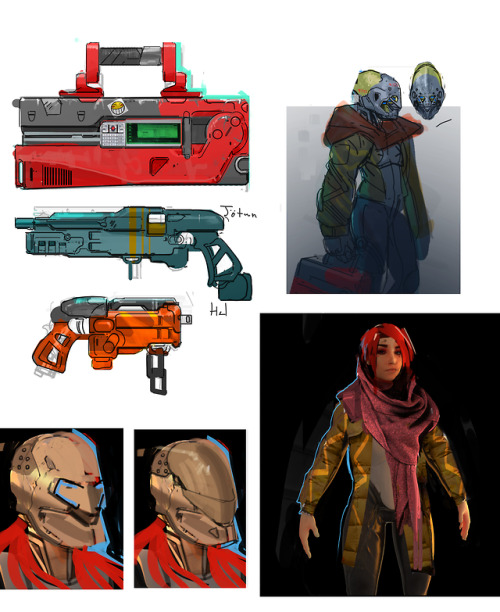

![[IV] Razorgirl. [IV] Razorgirl.](https://64.media.tumblr.com/5b74847eefa9f0ac569f490c72127004/tumblr_oek9l7qEMg1td30h9o1_500.jpg)


